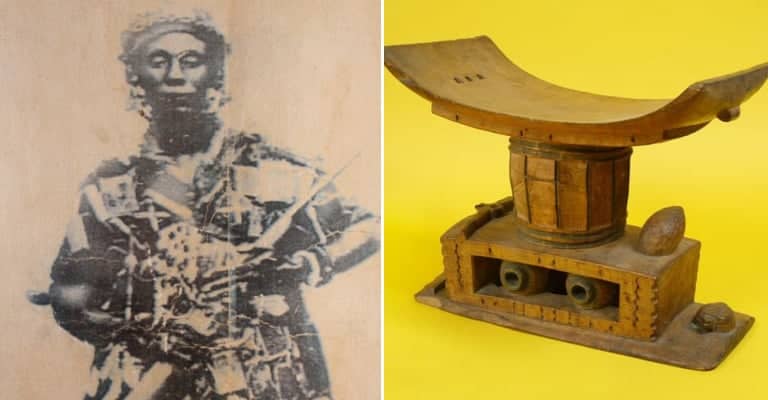“Yaa Asantewaa,
The woman who fights before cannons,
You have accomplished great things,
You have done well”
-Ashanti song-
In 1900, the British governor of the Gold Coast in west Africa – today’s Ghana – travelled to Kumasi, capital of the Ashanti tribe. There, he delivered a provocative speech, in which he demanded that the Ashanti produce the Golden Stool, the tribe’s most sacred object, so he could sit upon it. Nana Yaa Asantewaa, an Ashanti queen mother, rallied her people into resistance, in what came to be known as the War of the Golden Stool. Thousands took up arms, and Asantewaa was appointed war leader of the Ashanti. The Ashanti were eventually defeated and annexed to the Gold Coast, but retained their autonomy. They also did not produce the Golden Stool.
Anglo-Ashanti Relations and Wars
Nana Yaa Asantewaa was born in 1840, into the royal line of the Edweso clan of the Ashanti Confederacy. The Confederacy was an African state founded in 1701 by an enterprising chieftain named Osei Tutu. The new state’s founding mythology revolved around the Golden Stool – a mystical seat that supposedly summoned from the sky by Osei Tutu’s chief priest, to fall into the lap of the Ashanti Confederacy’s founder, thus confirming his right to rule. The Golden Stool became the Ashanti state’s most sacred object, and its chief unifying symbol.

A century later, the British came into conflict with the Ashanti Confederacy. Britain’s African Company of Merchants began supporting rivals of the Ashanti, creating frictions that were inherited by Britain when it dissolved the African Company and took over its holdings in 1821. Continued support for Ashanti tribal enemies eventually led to violence and a war that lasted from 1823 to 1831. That conflict, which came to be known as the First Anglo-Ashanti War, was followed by steady skirmishing, which flared into open warfare four more times in the following decades.
It was against that backdrop of conflict between her people and the British that Yaa Asantewaa was born, raised, got married, and had a daughter. The elder of two children, Asantewaa became a major landowner and prosperous farmer in her region, cultivating a variety of crops in her fields. Her younger brother eventually became chief of Edweso, and when he died in 1894, Asantewaa used her position as Queen Mother to nominate and secure the succession for her own grandson. However, the eruption of yet another conflict with the British colonial authorities ended up disrupting her plans.

An Ashanti refusal to sign a letter consenting to become a British protectorate led to the Fourth Anglo-Ashanti War, a brief conflict that lasted from December of 1895 to February of 1896. It was a lopsided affair that was decided by overwhelming British firepower, in which Maxim machine guns and the latest in field artillery were pitted against spears and obsolescent muzzle loading firearms. The victorious British exiled the Ashanti king, Prempeh I, to the Seychelles islands in the Indian Ocean, along with his chief supporters.
Among those exiled was Yaa Asantewaa’s grandson, for whom she had secured the rule of Edweso. A strong ally of king Prempeh, the colonial authorities forced him to accompany his liege when they shipped him to the Seychelles. Asantewaa was compelled to step into his shoes and assume his place, ruling as regent during her grandson’s absence. None too fond of the British to begin with – as few Ashanti were – the exile of her grandson further alienated and soured Edweso’s regent and Queen Mother against the colonial power.

